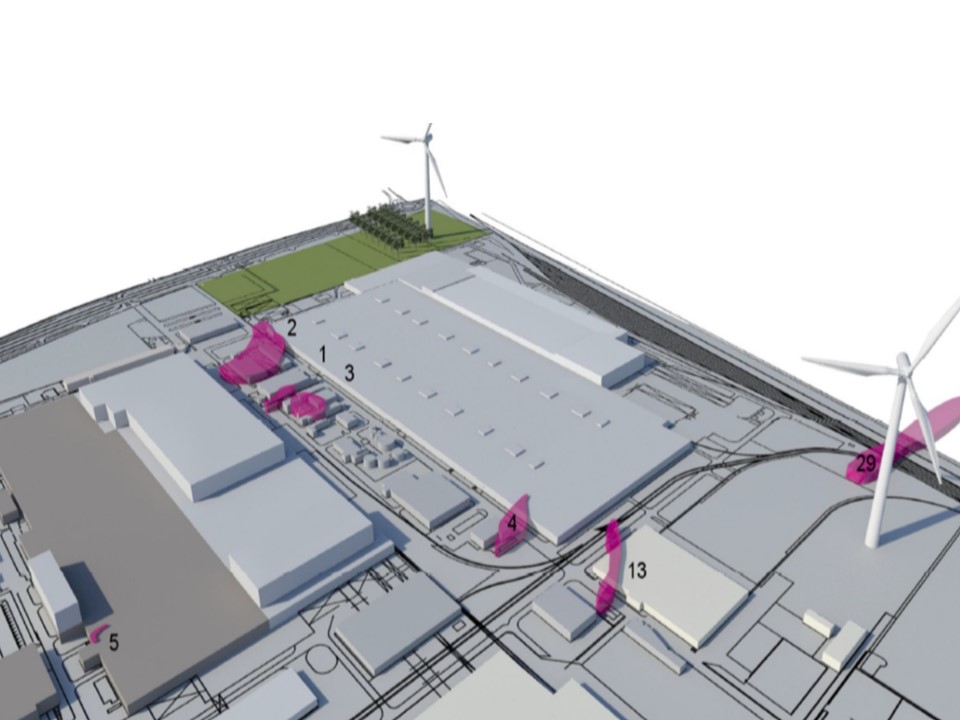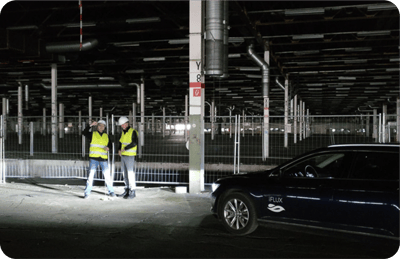Case Study
Biodegradation investigation at car manufacturing site

iFLUX Sampler
BTEX
Historic Car manufacturing
Flemish government & ABO
Belgium
Our value
Successful approach towards nature-based remediation
Validated risk of vertical pollution spreading is negligible
Shallow soil layers suitable for biodegradation
On this former Ford site (General Motors) in Genk, Belgium, 4 zones with polluted groundwater were discovered. Remediation was necessary. It concerned plumes 1, 2, 4 and 29 as shown on the site overview. For each of these BTEX contaminations a soil remediation had already been designed, whereby the contaminated soil in the source of the contamination was removed by excavation.
After completion of the remediation of the sources in 2019, the groundwater pollution had to be addressed. The groundwater remediation plan had not yet been designed.
As part of the feasibility assessment for potential natural attenuation of the groundwater pollution, iFLUX was asked to measure the groundwater and pollutant fluxes at plumes 1, 2 and 29.
Sampling
The iFLUX samplers, each with a water flux and a pollutant flux cartridge, were installed in 17 monitoring wells, divided over 3 locations of the Ford Genk site: plume PL01, PL02 and PL29.
The monitoring wells had a diameter of 50/63 mm (ID/OD). The exposure time of the samplers was determined based on the available concentration data.
A shorter exposure time of 60 days was foreseen in the core zones compared to 130 days in the plume zones.


"Flux data allowed us to calibrate and optimize our groundwater and transport model."
- Jan de Vos , ABO Group
Challenges
Assessment of potential for insitu remediation in function of groundwater dynamics:
- BTEX mobile contamination with potential spreading risk
- Horizontal and vertical propagation of the pollution?
- Feasibility assessment for bioremediation or natural attenuation
The Solutions
iFLUX provided insights into local groundwater dynamics to assess remediation possibilities:
- Height of measured fluxes can indicate height of spreading risk
- Comparison of horizontal and vertical dispersion possible
- Mass fluxes and groundwater velocity help to assess potential of bioremediation or natural attenuation
From the flux measurements we can deduce that the vertical spread of the pollution to the deeper layers (>10 m-bgl) is negligible. The shallow parts of the soil generally contain more oxygen to support BTEX biodegradation. In addition, the permeabilities measured in shallower layers are more suitable for possible addition of nutrients and oxygen or for recirculation of groundwater. The most suitable biodegradation conditions based on the flux measurements were found in plumes 1 and 2, mainly because mass fluxes were relatively lower there. In plume 29 the permeability is suitable, but the higher fluxes may be more toxic and inhibit biodegradation. If dilution and degradation rates are higher than the pollutant mass discharge, its load will decrease over time.
The results of the water flux measurements showed that groundwater moves 2x to 4x faster in the shallow layers between 5.4 and 6.2 m-bgl. The highest velocities were measured in plume 2 and 29. Between 10.1 and 11.6m-mv a slight increase in speed was observed. The lowest velocities were measured between 6.2 and 10/2 m-bgl and in the deepest measurements at 12.6 and 13.2m-bgl. The measured flow rates are show in the figure above per plume and as a function of depth.
The dominant pollutant flux was determined for xylenes (maximum 640 mg/m²/d), especially in the shallow wells of plume 29, but also in plume 1, despite the lower groundwater velocities measured. Except for one xylene flux of 66 mg/m²/d measured at 10 m-bgl, pollutant fluxes are decreasing rapidly with depth.The measured mass fluxes for xylenes are shown in the figure below per plume and relative to depth.

Conclusions
- Highest velocity of groundwater and dominant pollutant flux (xylenes) measured in shallow layers
- Horizontal dispersion >>> vertical dispersion (little to no vertical dispersion measured)
- Most suitable conditions for biodegradation based on the flux measurements determined in plume zone 1 and 2: relatively lower mass fluxes and higher groundwater velocity
See how iFLUX will help your project.
Get in touch to review how the iFLUX Sampler will support your project.